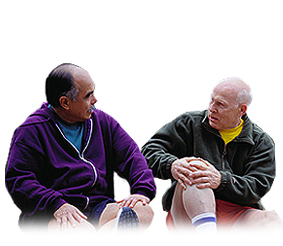Knee Pain SmartSiteTM | ||||||||||||||||||
Knee arthroscopyDescriptionKnee arthroscopy is surgery to treat problems inside your knee joint. This surgery uses a tiny camera to look inside your knee. Small cuts are made to insert the camera and small surgical tools into your knee for the procedure. Reasons to do knee arthroscopyArthroscopy is used to treat many different knee problems. Knee arthroscopy is not helpful to treat knee arthritis if that is the only problem. Common reasons to do knee arthroscopy are to:
Less common reasons to do knee arthroscopy are to:
What happens during knee arthroscopy?During arthroscopy of the knee, the surgeon uses a small camera to look inside your knee.
What happens after knee arthroscopy?After surgery, you will have an elastic bandage on your knee over the incision dressing. Most people go home the same day they have surgery. Recovery from simple procedures such as removing a torn meniscus or cartilage, a Baker's cyst, or synovium is usually fast. Most people can recover quickly because of the small incisions.
Recovering from more complicated procedures will take longer.
If you already have arthritis in your knee, you will still have symptoms of arthritis after surgery that repaired other damage in your knee. Arthroscopic surgeries alone, in general, cannot treat arthritic conditions well. | ||||||||||||||||||
| ||||||||||||||||||
Review Date: 8/9/2018 Reviewed By: C. Benjamin Ma, MD, Professor, Chief, Sports Medicine and Shoulder Service, UCSF Department of Orthopaedic Surgery, San Francisco, CA. Also reviewed by David Zieve, MD, MHA, Medical Director, Brenda Conaway, Editorial Director, and the A.D.A.M. Editorial team. View References:  The information provided herein should not be used during any medical emergency or for the diagnosis or treatment of any medical condition. A licensed medical professional should be consulted for diagnosis and treatment of any and all medical conditions. Links to other sites are provided for information only -- they do not constitute endorsements of those other sites. No warranty of any kind, either expressed or implied, is made as to the accuracy, reliability, timeliness, or correctness of any translations made by a third-party service of the information provided herein into any other language. © 1997- A.D.A.M., a business unit of Ebix, Inc. Any duplication or distribution of the information contained herein is strictly prohibited. | ||||||||||||||||||
A.D.A.M. content is best viewed in IE9 or above, Firefox and Google Chrome browser. | ||||||||||||||||||












